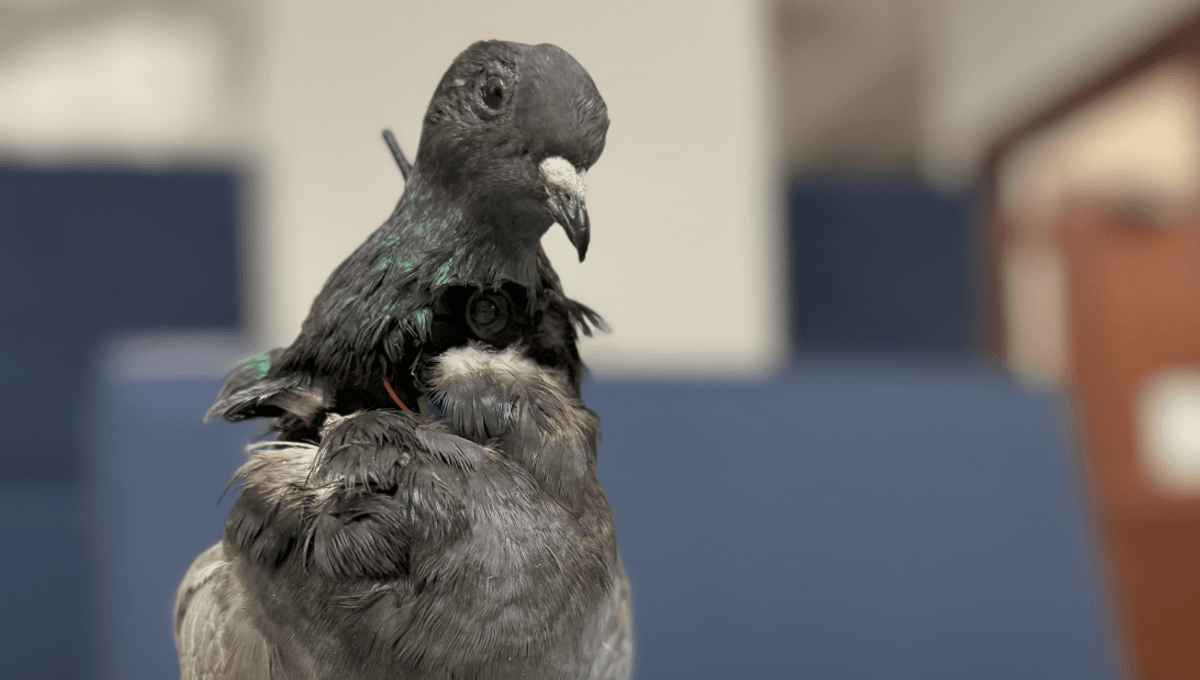
If you’ve ever seen a behind-the-scenes snippet from a nature documentary, you’ll have witnessed the grueling life of a wildlife filmmaker. From getting stuck inside bait balls to getting leeches on your eyeball, monitoring wildlife makes for a testing existence, so what if there was an easier way? What if, say, we could give the animals themselves the cameras?
A team of biomimetic roboticists at New Mexico Tech has been trying to do just that with a novel approach to wildlife monitoring technology that uses taxidermy birds to create naturalistic drones. Taxidermy is something most of us are more familiar with seeing mounted on a wall and – crucially – stationary, but these things are far from passive monitoring devices.
The use of a taxidermy duck significantly enhances it’s hydrodynamic properties.
Dr Mostafa Hassanalian
Most drones used to monitor wildlife are hexacopters and quadcopters, and they’re noisy as hell. The same propellers that are making that din can also be a threat to wildlife if they get too close, so a team led by Dr Mostafa Hassanalian has been adapting wildlife-friendly drones with the goal of creating models natural enough that they can slip into the flock for a close-up view at natural behavior.
They’ve already checked off flying models, and now their zombie drones are taking to the water as they’ve announced a new duck model that’s a pro in the pond thanks to the properties that make the birds such good swimmers in life.
“The use of a taxidermy duck significantly enhances its hydrodynamic properties,” Hassanalian told IFLScience. “The natural shape and feather structure of a real duck reduces water resistance, allowing smoother and more efficient movement through the water.
“Additionally, the waterproof properties of the duck’s feathers, combined with their natural buoyancy, help maintain stability and prevent drag, which is challenging to replicate with artificial materials.”
[We are] exploring designs inspired by snakes, lizards, and even frogs with jumping mechanisms.
Dr Mostafa Hassanalian
Another new face in the feathered drone fold is a pigeon model with realistic head movements that carries a camera. It might sound like spy technology fresh out of the “Birds Aren’t Real” playbook, but again the goal is to capture a close-up view of animals’ natural behavior that just isn’t possible when you send a bald ape wielding a large camera stumbling into the fold.
“The pigeon cameras are designed to collect environmental monitoring data in a way that is non-intrusive and blends seamlessly into the environment,” continued Hassanalian. “We aim to capture high-resolution images and videos for applications such as wildlife research and studying bird behavior.”
“By using realistic pigeon drones, we can observe interactions in both natural and human-influenced environments without disturbing the animals or drawing attention. Moreover, we have been working on integrating shape memory alloys into the pigeon’s claws to create a perching mechanism.”
It’s a crucial point to note that all of the animals the team are using for their models have been sourced legally through certified taxidermists, and they ensure that each animal died naturally. That means no birds are harmed in the development of the drones, and the team notes that they are creating the drones to help nature, not to try and hurt it. And what’s more, they might not stop at birds.
“One of our major goals is to expand the application of these drones for environmental conservation and monitoring, including the use of swimming bird drones for water quality analysis in remote and protected wetlands,” added Hassanalian. “We are also working on larger bird models to monitor broader ecosystems and even developing drones with the ability to dive and resurface.”
“Beyond avian models, we are considering other types of taxidermy animal robots that could offer unique capabilities for research and environmental applications. This includes exploring designs inspired by snakes, lizards (climbing), and even frogs with jumping mechanisms.”
Such advancements can be the crucial next step in providing insights about wildlife that can better help us protect endangered species and can even inspire new ideas for everything from better planes to exploring lava tubes on other planets. RIP Carl Akeley, you would’ve loved dead duck drone and pigeon cam.
Source Link: From Zombie Ducks To Pigeon Cams, Taxidermy Birds Monitor Wildlife Like Never Before